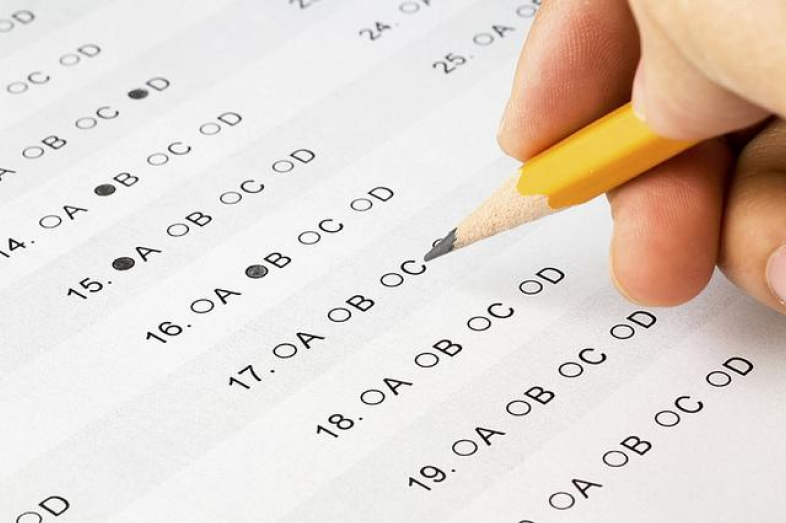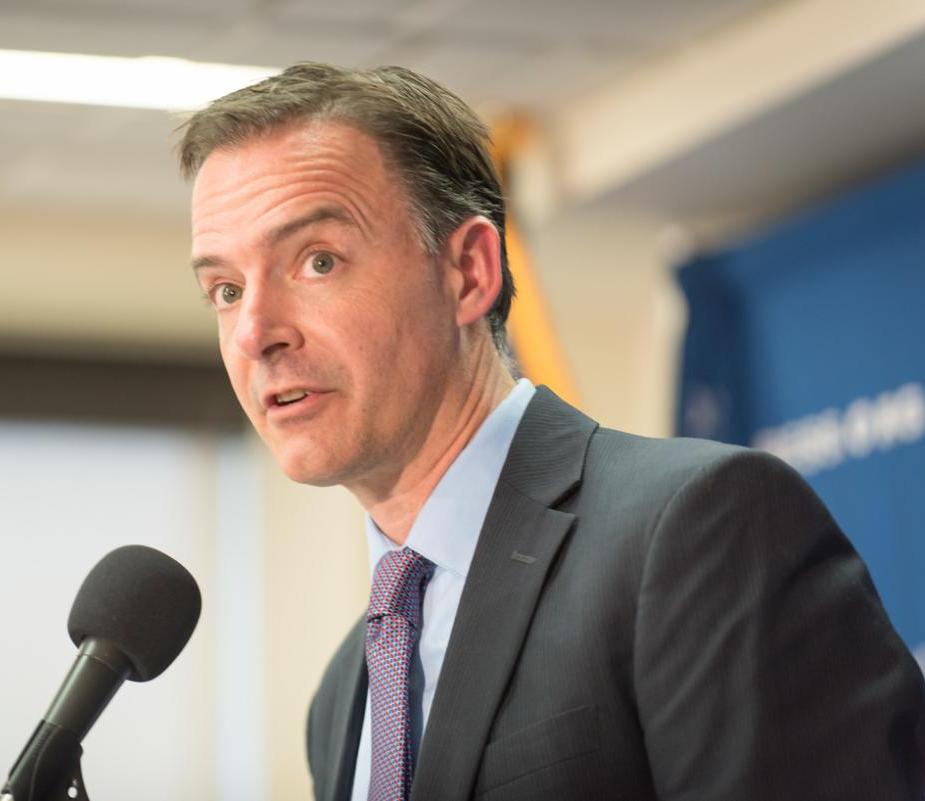

With state testing season wrapping up, the decision by some families to skip the K-12 exams in protest this spring has once again sparked widespread discussion – and news coverage around the country.
In San Diego, for example, teachers handed out fliers to parents earlier this month informing them of the right to keep their children from taking state tests, the San Diego Union-Tribune reported. A local teachers’ union official cited worries about the amount of testing, as well as its relevance and accuracy for gauging student learning.
In Tennessee, where the opt-out movement appeared to be gaining steam this spring, as reported by Chalkbeat Tennessee and other outlets, it became a moot point after the bulk of state testing for grades 3-8 was canceled altogether in April. That decision followed a series of problems with the administration of the assessments for English language arts and math.
The actions come as concerns have risen about the volume of standardized testing at the K-12 level, its perceived impact on instruction, and its use in evaluating schools, students and teachers.
It will likely be some time before the volume of students skipping state exams this year is clear, and whether the number is higher or lower than in spring 2015, when the issue hit the national education radar in a big way.
In the meantime, debates over the wisdom of having students skip the exams continue to rage.
“Many opt-out leaders see what they’re doing as an act of civil disobedience,” said Robert Schaeffer of the advocacy group FairTest, during an Education Writers Association seminar in Los Angeles earlier this year.
Schaeffer, who has worked closely with opt-out activists around the country, cautioned that parents and others promoting the cause do not speak with a uniform voice, nor do their agendas necessarily align.
“The opt-out movement needs to be understood as not a top-down thing, but a genuine grassroots, bottom-up movement in which different people in different states have different agendas,” said Schaeffer. He sees opting out as a powerful strategy to build pressure to reduce testing, remove “high stakes” from assessments, and “create space for the development of new and better forms of assessment and accountability.”
Chris Stewart, the director of outreach and external affairs for Education Post, has sharply criticized the push for families to sit out state tests.
“You can’t close the achievement gap by erasing the data,” Stewart said at the EWA event, arguing that opting out especially hurts students of color. He describes the efforts as reflecting an alliance of “unions, right-wing people, and privileged, pampered parents.”
Standardized testing is a critical tool to reveal “where the racial disparities are” in schools, said Stewart, the former executive director of the African American Leadership Forum in Minneapolis. “Every single civil rights lawsuit against the state around education has used test scores to prove its case.”
A coalition of 12 civil and human rights groups issued a statement last May echoing some of Stewart’s concerns: “Abolishing the tests or sabotaging the validity of their results only makes it harder to identify and fix the deep-seated problems in our schools.”
Opt Out Academy
Recent media coverage has addressed opt-out activity in multiple ways, including giving voice to protesting parents, examining the underlying issues, and highlighting how education leaders are responding.
- In Houston, a local advocacy group launched what they called an Opt Out Academy’ as a place for students to go on state testing days instead of school, Houston Public Media reported.
- In Florida, the Tampa Bay Times reported ahead of state testing on the practicalities of how several schools systems planned to deal with students on testing days if they refused to participate. In the Pasco district, the superintendent said such students must sit in the testing room quietly, and may not read or do other activities. Test monitors would remind them that the testing is important. Some parents were not happy.
- In Louisiana, the Advocate newspaper reported that opt-out activity appeared to be much quieter than in 2015. Changes in testing plans were cited as a likely reason, as the state passed legislation limiting the number of test items that could be drawn from the PARCC testing consortium and calling for a review of the state’s version of the Common Core standards.
- In New York, WNYC reported on dueling messages about opting out, including efforts by an advocacy group, High Achievement New York, to persuade families to stick with the testing. “Higher standards and assessments identify where our children need help and are closing achievement gaps for minority children,” one ad says. “Some people are trying to end student assessments. Don’t let them. Have your children say ‘yes’ to the tests and give them a brighter future.”
- In Colorado, an opt-out hotbed in 2015, activity appeared to be less substantial this season, amid changes to state testing, including the elimination of PARCC testing in grades 10 and 11 — according to Chalkbeat Colorado. The news outlet also reported on differences in how districts responded to the opt-out issue, and how their actions opened “a window into whether they value or dislike the current testing” and accountability system.
At the EWA discussion, panelist Mary Cathryn Ricker of the American Federation of Teachers said the school experience in the U.S. varies widely when it comes to assessment.
“The very lived experiences of some kids in some buildings is that they’re on … the far end of tons of tests and test prep,” she said, “and there are other kids who are taking field trips to the science museum and have 25 minutes of recess, and have art and music, language.”
While Ricker said multiple concerns are driving the opt-out movement, she believes the push in many states to tie teacher evaluations to student test scores “is absolutely a piece of what woke people up.”
The 95 Percent Rule
Hundreds of thousand of U.S. students sat out state exams last year. However, especially high concentrations, were limited to a few states, including Colorado, New York, and Rhode Island, according to an April report from the Educational Testing Service, which draws on multiple sources, including state agencies. The highest statewide rate was in New York, where about 20 percent of eligible test-takers in grades 3-8 did not participate. (FairTest estimates some 675,000 students nationwide skipped state assessments last school year.)
The ETS report finds opt-out levels to be “notably greater” in high school than in lower grades. In Washington State, for instance, roughly half of 11th graders missed the state’s English language arts and math tests, whereas the rates were 2 and 3 percent respectively for elementary and middle school.
If there is an overall decline in opt outs this year, some analysts suggest it might be explained in part by changes in testing policy that were intended to ease the test burden on schools and students. Both New York and Colorado enacted such changes. The Colorado measure, approved last year, also explicitly states parents’ right to prevent their children from taking state tests and that no negative consequences may ensue. At the same time, districts may not discourage students from taking the tests, the measure says.
State laws vary on whether opting out is deemed permissible, with some saying yes, others no, and many more unclear, according to the nonpartisan Education Commission of the States. Federal education law requires all school districts to test at least 95 percent of students in public schools.
Under the new Every Student Succeeds Act, though, it’s up to states to decide what happens in districts that miss the target. Thirteen states failed to meet the 95 percent threshold last year either statewide or in individual districts, according to Education Week.
A Testing Reset?
Ricker said a key question, as a new federal law hands states greater flexibility on testing and accountability, and as many states rethink their testing plans, is: “How will you make use of this reset? … We need to get our relationship with testing right.”
Robert Pondiscio of the Thomas B. Fordham Institute, a conservative-leaning think tank, said his “big issue” is not testing itself but “the effects of testing and turning schooling into test prep.”
Pondiscio, who also teaches part-time at a charter school in Harlem, said at the EWA session that parents should approach their school principal with a grand bargain. It goes something like this: “You teach our kids. You give them a full, rich curriculum. And we show up for the test, no problem. The first day you bring out a test-prep book, don’t bother, because we’re staying home.”
Pondiscio added: “I’m just tired of seeing testing not just encourage but practically demand bad practice in classrooms.”
But Stewart of Education Post responded: “I’m just tired of knowing that our kids can pass these tests and that they’re not. … That has life consequences.”
Diversity Debated
One dimension of the debate that’s gained more prominence in media coverage and policy debates this year is the racial and ethnic makeup of families opting out, given the perception that the practice was largely a phenomenon among white middle-class and more affluent families in 2015.
In New York, students without a valid reason for missing the state tests last year were much more likely to be white, according to the ETS report. Also, they were less likely to be economically disadvantaged or English language learners. Likewise, the report said, Coloradans who skipped the state exams in 2015 tended to be white students who were ineligible for a free or reduced-price lunch.
Opt-out rates were low last year in most large urban districts, one recent report concludes The testing “inventory” study released last fall by the Council of the Great City Schools included a brief discussion of the issue, and some data points, amid what it described as “wide speculation that much of the protest was centered in economically more well-to-do areas.”
While some cities had individual schools where opting out was “substantial,” those were “anomalies,” the report finds. In most of the 66 big-city districts surveyed, opt-out rates were about 1 percent. Notable exceptions included two cities in New York — Rochester (20 percent) and Buffalo (15 percent) — as well as Albuquerque (6 percent) and Portland, Oregon (3 percent), according to the report.
Some anecdotes in this year’s new coverage suggest there may be greater diversity among opt outs in 2016, but there appears to be no data yet to confirm this.
Opting out activity once again drew substantial attention this spring in New York. News reports on the recently completed state testing, including an early roundup by Politico, signaled some ups and downs in overall opt-out activity across communities in the Empire State.
The issue, not surprisingly, was on the radar of state education leaders, though their viewpoints did not always align.
The new state Board of Regents Chancellor in New York, Betty Rosa, declared in early April that if she were a parent, she would opt her children out. At the same time, the state commissioner of education, MaryEllen Elia, made the case for families to stick with the state testing regime. She pointed to recent changes in test policy, including having fewer questions on the state reading and math tests, allowing students unlimited time to complete them, and no longer pegging the results to teacher and principal evaluations.
“Some people may change their mind, and some may not,” Elia told the Buffalo News. “The most important thing is to get the word out about the changes … and get that trust back.”
EWA intern Elizabeth Thorne conducted research for this article.
